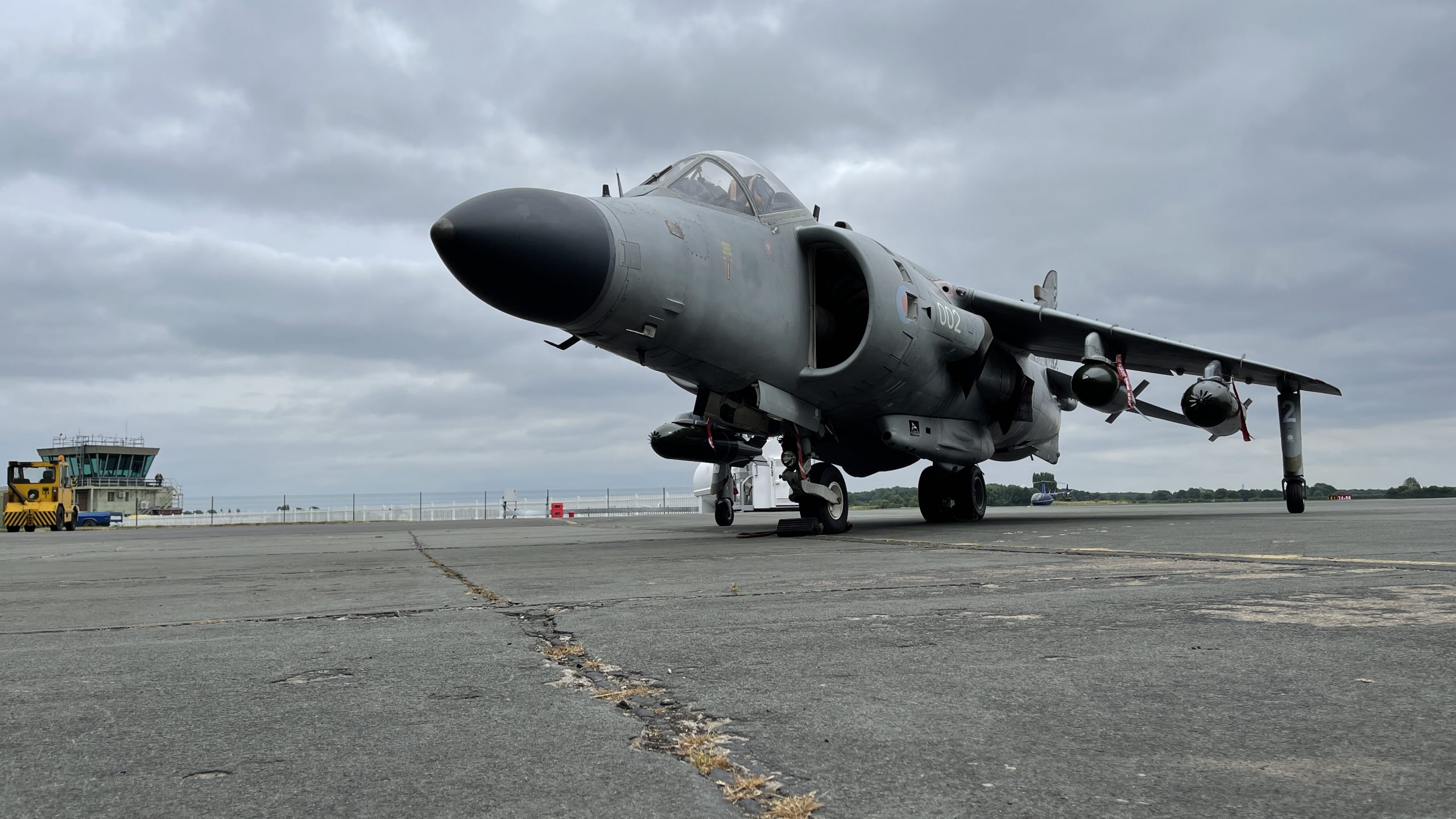After Church Fenton’s change of role in July 1959, it became a much more sedate place. For the next three years the only flying taking place would be the far quieter Chipmunks of Leeds University Air Squadron. Various other non-flying units were also on the station at this time.

DHC Chipmunk WG348 of 2FTS. © Keith McKenzie 
SA Bulldog XX519, the first example in British service, shortly after being delivered to Church Fenton. © Keith McKenzie
In March 1962, the station became number 7 Flying Training School (7FTS). It operated the Jet Provost T3 in the basic fast jet training role. During the mid-1960s the unit received the improved Jet Provost T4. 7FTS was disbanded in November 1966, and the station became home to 2FTS, with its’ Chipmunks.
For a period from 1968 – 1969 one of Church Fenton’s primary roles, alongside PFS, was as the Aircrew Officer Training School (AOTS). When South Cerney closed as No 1 ITS in 1968 (basic officer training for officer cadets entering the RAF on Direct Entry commissions rather than Permanent Commissions via the RAF College Cranwell) Church Fenton was chosen as AOTS for aircrew officer cadets whilst officer cadets for the ground branches were trained at Henlow. The system changed again in late summer 1969, when AOTS closed and all officer cadets, other than Cranwell cadets, were trained together at Henlow.
For a few years from 1973 the base was home to the Royal Navy Elementary Flying Training School (RNEFTS). This provided basic training for RN pilots, either destined for 705 Sqn and the helicopter world at Culdrose, or for the lucky few, the Sea Harrier. The school operated the (then brand-new) S.A. Bulldog (and had the pleasure of introducing it into service, the first aircraft in the fleet being delivered to Church Fenton straight from the factory at Prestwick), much to the envy of RAF students on the base, who were stuck with their trusty old DH Chipmunks.

This was only a relatively short-lived arrangement, however, and the base soon went back into ‘care and maintenance’ with the associated peace and quiet.

Church Fenton carried on in this role until 1992, by which time it had become the first station in the RAF to operate the Shorts Tucano T1 turboprop trainer, which is the current basic fast jet trainer for the RAF. Alan Newton was one of the Flight Commanders on 7FTS in the late 1980s / early 1990s and helped introduce the Tucano in to RAF service. For an explanation of 7FTS unit organisation at this time, please click on HERE.
As a result of the government’s “options for change” policy that came about with the ending of the Cold War, it was decided that there was overcapacity in the system, so the decision was taken to close Church Fenton, but retain the operational side of the airfield for use as a relief landing ground for nearby 1FTS at RAF Linton-on-Ouse.
The airfield once again fell almost silent, until with the closure of RAF Finningley in 1995, a new home was needed for Yorkshire UAS / 9AEF and their Chipmunk / Bulldog fleet. Yorkshire UAS therefore moved back in to Church Fenton, the base the squadron had been formed at some 26 years previously. The squadron now has use of arguably the best facilities of any UAS in the country.
At the time Yorkshire UAS were moving home to Church Fenton, it was also being discussed whether to move the Jetstream element of 6FTS in as well, although it was eventually decided to re-locate these aircraft to RAF Cranwell.
Yorkshire UAS remained at the airfield until eventual closure of the station (re-equipping with Grob Tutors in 2000), and being joined in 1998 by a detachment of Slingsby Firefly T67M260 aircraft of the Joint Elementary Flying Training School. This move was made permanent in 1999, which meant that Church Fenton became the RAF’s main Elementary Flying Training airfield. The Fireflies added some welcome life to the airfield (in aircraft movements, at least!) with many hours being flown.
So for 5 years, the airfield was a fairly settled place, with both Yorkshire UAS and JEFTS going about their training task very successfully.
In mid-2002, the news was released that as from July 2003, the RAF element of JEFTS was to be absorbed into UASs around the country, hence we no longer see Fireflies buzzing around the circuit.

On the line with the Bulldogs of Yorkshire UAS in the late nineties. © Richard Shires 
JEFTS Firefly G-BWXR taxies past the viewing area. © Chris Chambers 
A line-up of Grob Tutors of Yorkshire UAS outside 3 Hangar. © Jamie Steele
In late 2005, a new squadron was formed at Church Fenton, this was 3 Squadron of No.1 Elementary Flying Training School. Its purpose was to train all RAF direct entry pilots. This squadron was later given the nameplate of 85(R) Squadron, so bringing a famous squadron back to Church Fenton for the third time (previously on Hurricanes during the war, and on Meteors in the 1950s).
Due to reductions in pilot throughput following the 2010 Strategic Defence and Security Review, 85(R) Sqn was disbanded in 2011, with the final course graduating in August of that year. The station’s complement of aircraft consequently reduced, with Yorkshire UAS / 9 AEF once again being the only residents.
In March 2013 it was announced that Church Fenton would close as an RAF station by the end of the year, and so it was that in December 2013 the final aircraft made the short hop from Church Fenton across to their new home at Linton-on-Ouse. There was little, if any, celebration of the station’s long history, meaning the station faded in to history without so much as a whimper.

